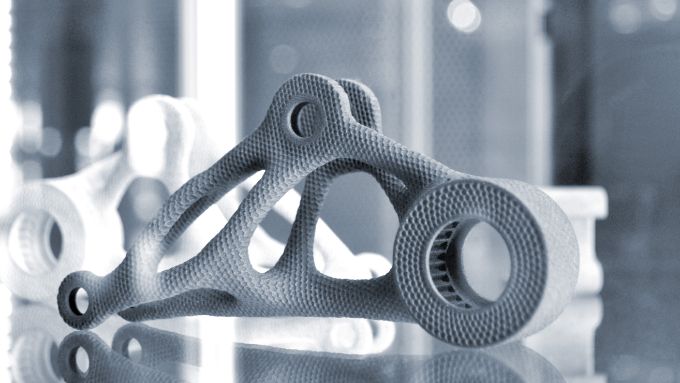Maybe you’ve used a 3D printer to make a pair of Vulcan ears or a new key fob for your Mom, but have you ever 3D printed an entire small-scale landscape to serve as the background for a new video game? Some of the ways the entertainment industry uses 3D printing may seem obvious, while others are known only to insiders.
Prosthetics and Costuming
Actors gain and lose weight, dye or cut their hair, or even shave their heads for roles. But they can’t exactly grow an extra limb. That’s where 3D printing can help. From ears to noses to realistic-looking robotic hands, 3D printing can make it possible and affordable to turn a live actor into an imaginary creature.
Some iconic costumes were created using 3D printed parts, including Robert Downey Jr.’s Iron Man costume, Ryan Reynolds’s Deadpool mask, and Angela Bassett’s Queen Ramonda crown.
Props
Live theater and movie props can get dented, scratched, or break with repeated use night after night and take after take. Additive manufacturing techniques make it fast and less expensive to replace props with identical replicas.
The Broadway musical Head Over Heels included a scene where a vase full of flowers gets knocked over and breaks. The run had 36 previews and 164 performances. Imagine being the properties director tasked with finding 100 identical, breakable vases.
The solution was a 3D-printed vase made of several components held together by magnetized edges. The vase broke exactly the same way in every performance and could be quickly reassembled for the next show.
Set Design
While scale can be a problem when creating large sets composed of several pieces, 3D printing is uniquely suited to replace CGI with realistic-looking backgrounds. Wet designers can 3D print environments using components that would be too costly to construct with conventional methods.
Animation
Stop-motion animation, which first gained prominence with Claymation productions, reached new levels of detail with films by LAIKA, a studio based in Portland, OR. From Coraline to The Boxtrolls to The Missing Link, the Oscar-nominated and BAFTA-winning studio has used 3D printing to produce tens of thousands of different facial expressions for their animated characters, making their stop-motion stories look far more natural. Partnering with 3D solutions company Stratasys, LAIKA has achieved a subtlety and complexity of repeatable color variations and facial expressions that make their animated films stand out.
The entertainment industry will find new ways to use 3D printing in pre-production, prototyping, set design, and prop, costume, animation, and character creation that will push both filmmaking and 3D printing technology forward.
Entertainment isn’t the only industry using 3D printing in innovative ways. 3D printing is becoming a standard technique in the manufacturing, automaking, and fashion industries. That’s one of several reasons many schools have recognized the value of teaching kids about 3D technology. Kids don’t just learn how to 3D print—they build creativity, problem-solving, and teamwork skills, all of which will be attractive to future employers.


